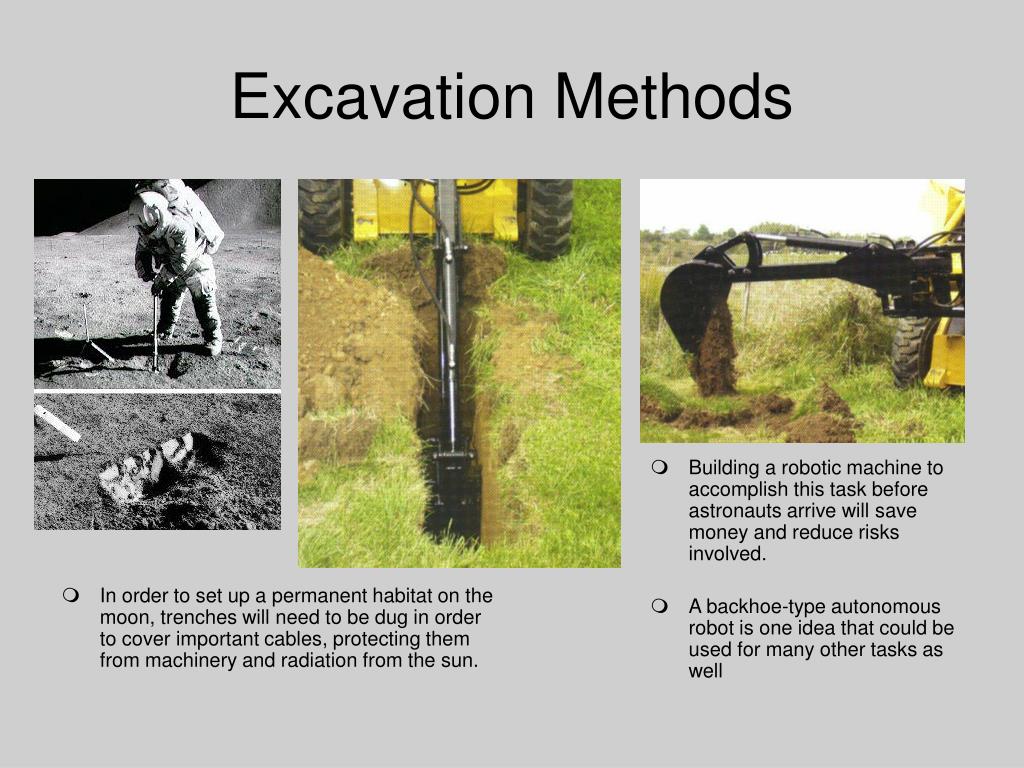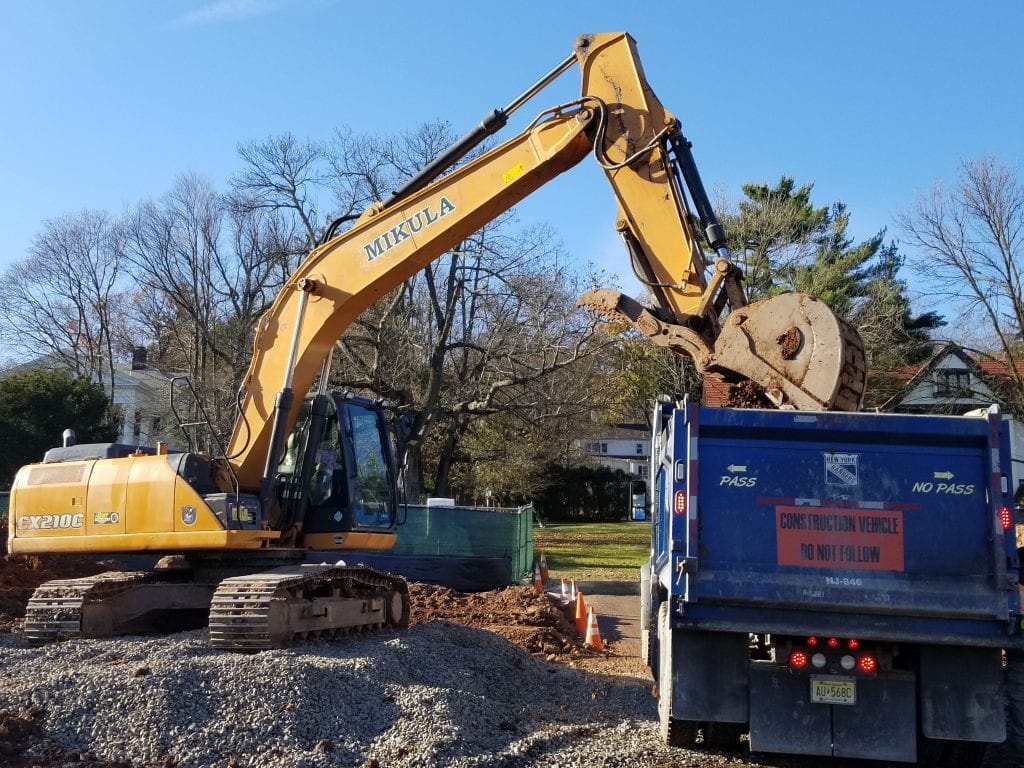Top Guidelines Of Concrete Contractors
Wiki Article
Little Known Questions About General Contractor.
Table of ContentsLittle Known Questions About Grading Contractors.Not known Facts About Grading ContractorsThe Of Concrete ContractorsThe 45-Second Trick For DemolitionGrading Contractors Can Be Fun For Everyone


Scrapers or Pans excavate soil in one area, haul and dump the soil in one more place (demolition). It is tough to match the performance of scrapers for cut/fill dirt procedure if the haul range is much less then a mile. Scrapers are typically pulled by a rubber tire wheel tractor as well as are occasionally pushed with the cut area by an excavator.
There are lot of times that scrapes are not made use of for website grading and also a dump truck is utilized: the haul may be to long, the haul may go across roadways where scrapers are not permitted, acid rock might be come across, tools availability, etc. Unload trucks remain in usual use and most likely call for little conversation.
Numerous trucks have a top-hinged tailgate that can not dispose any type of rock wider after that the tailgate size. "Rock body" beds, on the other hand, have no tailgates as well as can discard any size rock, although their volume capacity is decreased. These internet links reveal devices specifications for several common dump vehicles. Compaction Tools raises the density of the soil and in some situations gives a smooth, rolled surface.
The 30-Second Trick For Concrete Contractors
From a simple test pit to percussion drilling to core boring the proprietor has increasingly extra pricey choices that yield significantly better information regarding the site underground. As an example, the Owner on a 100,000 SF structure task may authorize twenty dull places with split spoon dirt examples taken up until rock is reached and then core examples of rock.Recognizing the type as well as top quality of rock (from the core samples) and place of rock (from the soils boring) is a genuine benefit in jobsite preparation. Conversely, the Proprietor of a 100,000 SF structure might determine to wage no geotechnical screening whatsoever. The decision regarding geotechnical screening is usually made by an Owner without input from the Building and construction Supervisor.
The area on Soils and also Geology assists you recognize the terms in the geotechnical record. A knowledge of the approximate area of the rock helps the Building and construction Supervisor to intend the series of steps following rock excavation. If rock is in one corner of a large structure job, for example, the earth excavation could begin at the opposite end of the building in order to start foundation job soonest.
Starting the structure work early would be an excellent suggestion if the rock might be gotten rid of by tearing. If the rock is very difficult as well as needs significant blasting, it might be sensible to hold foundation work up until the blasting is finished. The Building Supervisor ought to work with these kinds of decisions and also make use of all the technical day readily available.
Not known Incorrect Statements About General Contractor
Unclassified excavation stipulates that all rock or other unanticipated materials (leaving out hazardous materials) come across in the sitework will be the duty of the Contractor at no adjustment in contract expense. An unclassified excavation is simpler from a book-keeping point ofview and also puts the obligation for geotechnical problems onto the Sitework Specialist.Just How Water Affects Sitework? It's incredible what a hefty rain can do to a building job. Before the rainfall, the site may be completely dry, heavy tools successfully moving earth, the various other trades efficiently performing their work. Within hours the project can be a careless, mud-hole with worker performance reduced to about 10%.
In most areas of the globe, the Building Manager need to bear in mind a simple fact: IT WILL CERTAINLY RAINFALL. Good preparation can decrease the damages and disturbance of a heavy rain to a jobsite. Typically the excavation as well as grading is entrusted to the Sitework Specialist (and also their Foremen is accountable to monitor and route the hefty tools as well as operators).
The Construction Supervisor must be continually conscious of what rainfall will do to the task website. It is not uncommon for the Sitework Foreman to work their hefty tools for maximum effectiveness and also wish it does not rainfall. Among the best methods to get ready for rainfall is to slope all grades to drain pipes and to smooth rolled the surface area prior to a rain.
The Greatest Guide To General Contractor
The Construction Manager need to be discerning enough to guarantee that heavy rainfall does not quit working on the project much longer than required. Daily a knockout post discussions with Sitework Foremen may be needed to achieve this objective. Whenever excavation is called for listed below the existing water table on a task, the process of dewatering must be taken into consideration.In a genuinely cohesive soil, the water travels so slowly with the clay or silt that dewatering is not normally necessary for the fairly short time of excavation. Dewatering might be required for a solitary footing excavation or for a whole job site. The most usual dewatering approaches are trench drains, deep wells and also well points.

Ground water infiltration can likewise be lowered by cutoff methods such as sheet stacking. The expenses for dewatering can be shocking, including tools rental, labor as well as electrical power (or fuel). High dewatering costs have actually paled the profit margins on much way too many tasks. The lots of variables listed here make the job of estimating dewatering expenses really challenging, and really inexact.
This choice should always be taken into consideration when evaluating the prospect of dewatering. Certainly the choice is just feasible if gravity can run the water to reduced ground. Trench drains can be reduced with a backhoe as well as filled up with a rugged, granular product (# 4 stone for instance), however treatment has to be exercised in choosing the water outlet type and location.
The Basic Principles Of Mini Excavator
A siphon, necessarily, makes use of air pressure to lug water from one elevation, up over an obstacle, to a reduced altitude. The pipelines in a siphon system must be impermeable and some ingenuity is commonly needed to completely fill the siphon pipe. The siphon pipe should be full for the siphon to begin.A deep well is composed of a pump, pipe and an upright well casing. The pump consumption is at the bottom of the well housing (generally some crushed stone is positioned down there as a filter tool) (trencher). The water is pumped up the tube, out of the well covering, and to an appropriate discharge learn this here now place.
In a rugged sand, for instance, a huge location can be pumped to near the pump intake elevation. A less permeable soil, on the other hand, decreases the effectiveness of a deep well. Considering that the pump is generally at the end of the deep well, there are no elevation constraints as a result of vacuum lift, as well as deep wells can decrease the groundwater over 50 feet.
On the base of the wellpoint there is a 2 foot long screen as well as shutoff, water jets out of this shutoff and produces a hole right into which the wellpoint pipeline water excavation can be reduced. This opening is frequently made a bigger size (for instance 10 inches) to enable a coarse sand backfill to help filter the water (demolition).
Report this wiki page